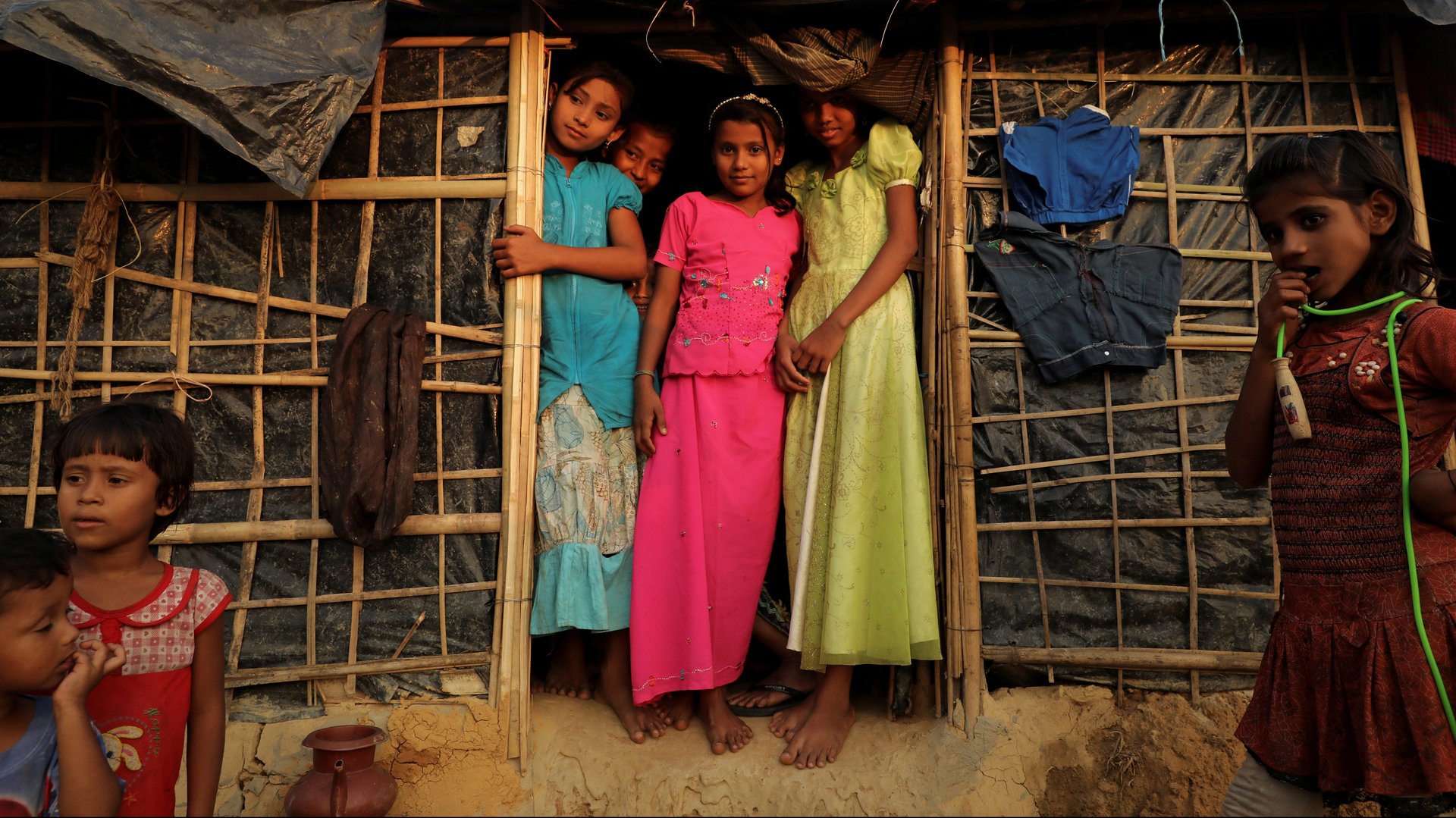The language of the persecuted minority Rohingya will be digitized
The Rohingya, the persecuted Muslim ethnic minority in Myanmar, will soon be able to text, write emails, and post online in their own language.


The Rohingya, the persecuted Muslim ethnic minority in Myanmar, will soon be able to text, write emails, and post online in their own language.
The move marks a big step for a group of stateless people who have long been denied recognition—in real life and online. The script of the Rohingya language will be included in the next version of Unicode, the international standard for encoding characters and symbols on computers.
“After I learned about the Hanifi Rohingya script in 2011, I wanted to make sure that the people who use the script would someday have a chance to use it on computers,” says Anshuman Pandey, a US-based language technologist who conducted the research to develop the Rohingya script for Unicode standard.
Language is crucial to understanding the crisis unfolding in Myanmar. The Rohingya language is distinct to most other languages spoken throughout Myanmar, but shares some similarities with a Bengali dialect. While the Rohingya have existed in Myanmar—a Buddhist majority country—for centuries, those opposed to the claim they are indigenous to the country point to its linguistic similarity as proof that they are rather migrants from Bangladesh. This perception of Rohingya as outsiders and illegal immigrants is used to implicitly justify their disenfranchisement, as well as the atrocities being committed against them.
In fact, the Myanmar government won’t even use the word Rohingya, instead calling them Bengalis, foreigners, or worse, terrorists, and effectively designating them as the “other.” In this year alone, more than 500,000 Rohingya have recently fled following a government crackdown and which has been called a “textbook example” of ethnic cleansing by the top United Nations human-rights official.
“This is a big moment for the Rohingya community,” says Tun Khin, president of the Burmese Rohingya Organization in the UK. “The government has denied our existence for many decades,” he adds, pointing to a 1982 citizenship law that prevented Rohingya from easily accessing full citizenship, rendering many stateless.
With the addition of the Rohingya script, “our identity and culture will be preserved for the future,” Khin explains.
The move to digitize the language will also support the humanitarian response. “It gives more potential for communications with the vulnerable population,” says Rebecca Petras, deputy director of the Translators without Borders. “That is very important for basic needs, such as health information.”
The ABC of encoding
There are four different scripts used for writing Rohingya: Burmese, Arabic, the Latin-based ‘Rohingylish’, and the Hanifi Rohingya script, which was developed by Mohammad Hanif, an Islamic scholar now based in Bangladesh, in the 1980s. Unicode will be using the Hanifi Rohingya script.
Pandey describes a three-part process to encoding the Rohingya script. First, researchers have to determine how suitable a language is for encoding a script in Unicode: Is there a standard version? Is it just a variation of an existing script? If it is a unique script, then researchers develop a proposal for submission to the Unicode Consortium (Pandey wrote a proposal (pdf) to include the Hanifi Rohingya script in 2015).
“The most difficult aspect of getting a script into Unicode is a conceptual one: what sort of model should be used for typing a script on a keyboard, as opposed to the traditional aspects of writing it down,” Pandey says. Researchers have to also consider the script’s display on devices.
The proposal is then reviewed by technical experts at the Unicode Consortium, who look for any issues with the encoding. “If the proposal is accepted, then the script moves through the ISO [International Organization for Standardization] process,” Pandey says. There’s no specific date yet on when the next version of Unicode, which will include Rohingya, will be published.
The decision to digitize the Rohingya language has been described by humantarians as “revolutionary.” But for Pandey, it’s Unicode’s mission that is revolutionary. “Scripts used by minority communities around the world, which would otherwise disappear, now have a chance to continue on.”